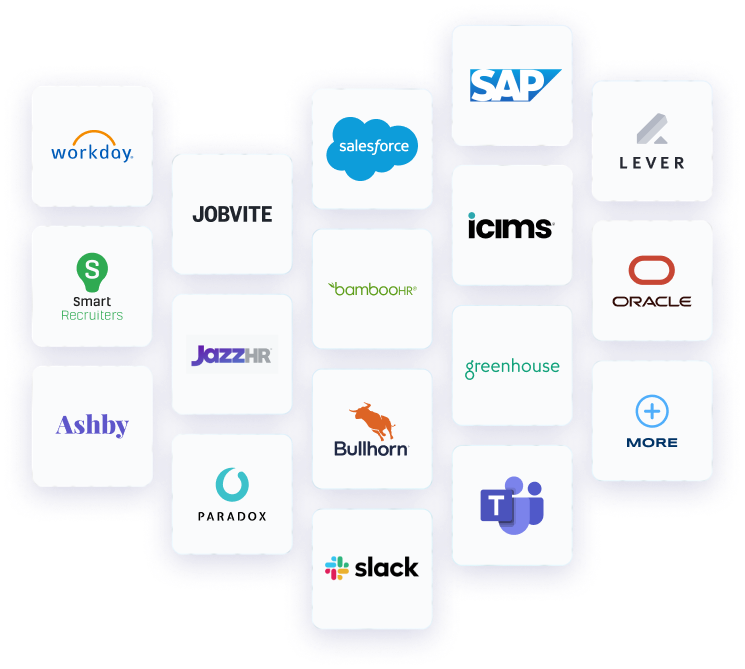

Crosschq Blog
The Battle Against Attrition, Part I: How Training and Mentoring Employees Pays Off
-1.png)
The battle against attrition begins with valuing existing employees and helping them achieve their own goals. To succeed in this task, business goals and employee goals must be aligned. If employees don’t win, the organization won’t either, so it is in the best interests of the company to support its workforce.
Start with Recognition
Start by appreciating the work employees are doing right now. Identify employees who shine in their current role, and recognize that if their value isn’t recognized by their current employer, they may well be wooed away by one that will.
79% of employees quit because they don't feel that they or their efforts are appreciated. Good employees can be easy to overlook when squeaky wheels are getting all of the grease. Ensure workers who give 100% daily are recognized and rewarded.
Once high-value employees are identified, start looking for ways to increase their value to the organization. Their full potential may not be utilized in the position they are currently in. Examine roles up the food chain, or even laterally into other areas of the business.
If the worker can be skilled or trained to step into a role with heightened responsibilities and rewards, it can help cement their loyalty to the company and reduce the risk of attrition. Their role can be filled in the same way, working down through the ladder until the only role left empty is at entry level and thus capable of being filled more quickly and at less cost.
Continue with Transparency
72% of job seekers say they've started a new job - or even a new role in their existing company - and ended up feeling misled and taken advantage of. Being clear about the job responsibilities, any additional expectations in regard to performance, and the commensurate rewards and recognition that apply is critical in gaining employee trust.
Compensation doesn’t have to be strictly monetary. Retention can be as simple as showing employees a willingness to invest in them and increase their value. Learning and development initiatives can be leveraged to keep employees engaged and motivated.
Some leaders worry about offering employees the chance to better their skills and knowledge. After all, what if the employee then leaves for another company? The reverse is typically true: 70% of the respondents to one survey said that job-related training and development opportunities influenced their decision to stay at their current job.
Why L&D Is so Important
50% of the global workforce will need to be reskilled by 2025, and this number, while it varies by industry, does include workers from all types of jobs. As tech and AI infiltrate into more and more workplaces, even non-tech workers need familiarity with tools and technology to do their jobs correctly.
74% of employees feel they aren’t reaching their full potential at work due to a lack of development opportunities. Workers who feel stagnated as they see others having futures invested in by employers dedicated to closing skill gaps are more likely to walk away.
This spills over to affect diversity initiatives as well. Millennials who are members of one or more marginalized groups are more likely to quit if they feel they are in a “going nowhere” job. In fact, seven out of ten high-retention-risk employees are willing to leave their company in order to advance their careers.
However, 61% of job seekers say that they weigh career development opportunities when considering job opportunities, providing organizations with a wide-open opportunity to hire workers eager to learn and be invested in.
L&D opportunities benefit more than just workforce numbers. Revenues can also be positively impacted. One study showed that organizations that offer comprehensive training programs have 218% higher income per employee and enjoy a 24% higher profit margin than those who skip or skimp on employee training.
Mentorship is Key to Retention
According to one case study, employees participating in mentoring programs are 49% less likely to leave. Mentoring programs also yield the additional benefit of saving the company $3,000 per participant per year. These results applied to both the mentors and the mentees involved in the program.
Mentorship programs in the workplace must be employee-led and fully supported by the organization. One of the main reasons employees leave is due to a lack of career development opportunities, so these mentorship programs can help open the door to conversations about learning and growth and provide employees with the motivation to accept help from the company in achieving their goals.
Assigning a mentor to a new hire can significantly help improve retention. 91% of employees with a mentor are likely to say they are satisfied with their job, compared to 40% who want to leave in the first few months after hiring.
Mentorship can also be a powerful tool to help improve diversity in the workplace. A study conducted by Cornell University's School of Industrial and Labor Relations found that mentoring programs increased minority representation at the management level by 9% to 24%, and dramatically improved promotion and retention rates by 15% to 38% for minorities and women, compared to non-mentored employees.
Train Employees Specifically for Promotions and Emerging Roles
Cost-of-hire for a new outside employee alone should be enough of an argument for the concept of promoting from within. Consider filling higher-level spots through strategic mentoring, upskilling, and preparing lower-level employees to advance in the company. After all, an entry-level employee costs 180% less to hire and onboard than an executive.
Hiring from the outside - often at a much higher salary than existing employees in similar roles are getting - can breed resentment, anger, and discontent. Passing over an employee for an outside hire can make them 15% more likely to quit or consider quitting, even compared to being passed over for a coworker.
The current labor market is tipped in workers’ favor. With 64% of employees willing to bail on their employer without another job prospect lined up, organizations cannot afford to alienate existing good workers.
Skills gaps can be closed, emerging roles be filled with hand-picked and carefully trained employees, and knowledge can stay within the parent organization. Investing in the current workforce is the best, least expensive, and most cost-effective way to future-proof it.
In addition, employees remain employed 41% longer at companies that have strong internal mobility programs compared with employees at companies that consistently fail to recognize existing talent.
Using Crosschq to Battle Attrition
Crosschq Talent Intelligence Cloud™ is the key to preventing employee attrition. Each module is designed to help organizations hire the best person for each position, decreasing attrition through better matching between job and candidate.
Once a candidate is hired, they can be nurtured, mentored, given L&D opportunities, and tracked to gauge performance and job satisfaction. By increasing positive employee experiences and engagement, and providing them with the tools they need to grow and succeed, their career path can be aligned with organizational current and future needs.
- Crosschq TalentWall™ helps companies monitor their pipeline for candidate diversity
- Crosschq Recruit provides a ready-to-hire talent pool of candidates eager to advance
- Crosschq 360 reduces unconscious bias in reference checking for better quality of hire
- Crosschq Analytics helps organizations track engaged employees for higher retention
For more information on how Crosschq can provide you with help in the battle against employee attrition, contact us for a demonstration today.
Take the Guesswork
Out of Hiring
Schedule a demo now



%20-200x43.png)






